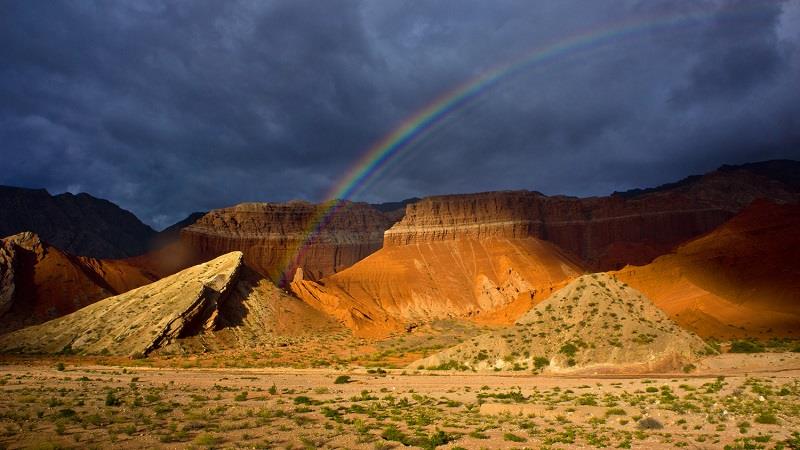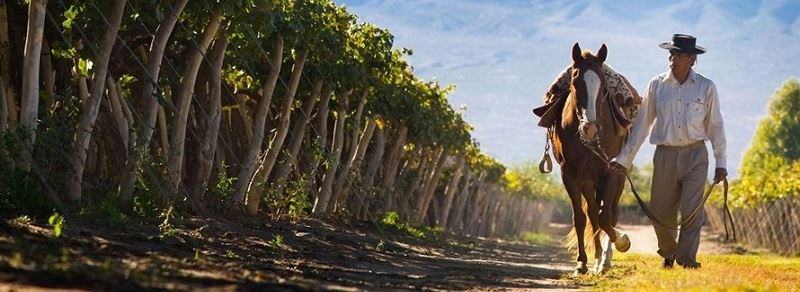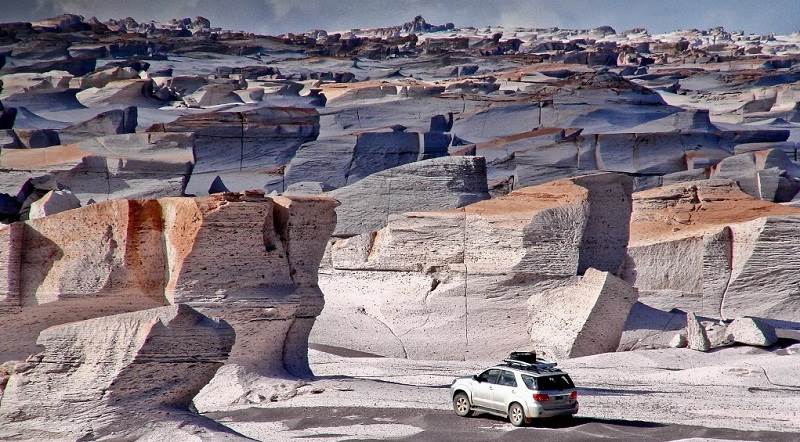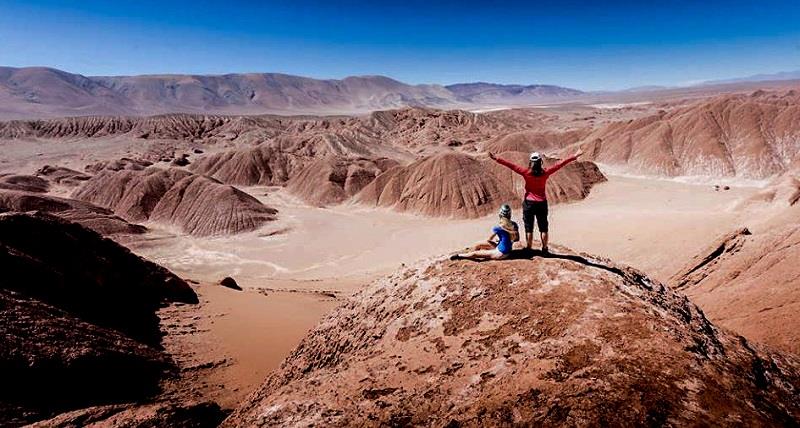Sometimes we may wish to change the route for the Puna tour so that we go South to North, especially if clients are traveling on to San Pedro de Atacama afterwards. Doing the route this way round does also give better acclimatization to the altitude.
Day 1: Salta to Hualfin, Catamarca – Distance driven 400 km.
We start our adventure today driving through the Valle de Lerma tobacco region and into the stunning naturally formed canyon of Quebrada de las Conchas and onto the premier wine town of Cafayate. We’ll have lunch in the town or in one of our favorite vineyards (if we have time, but there is always time for wine tasting) before heading south along the iconic Route 40.

We will visit the ruins of Quilmes where descendants of the original inhabitants tell us the remarkable and sad story of how this indigenous tribe resisted the invasion until they were finally, cruelly, broken. We may also have time for the impressive Pachamama museum, a monument to the indigenous culture at Amaicha del Valle.
The landscape then changes dramatically as we head into a huge open plain on the way to Hualfin, a small town in the Catamarca region and the gateway to the Puna. If we arrive early enough there is a boutique vineyard here with the region’s trademark white Torrontes as well as the classic Argentine Malbec.

Day 2: Hualfin to El Penon, Catamarca – Distance driven 240 km.
After visiting Hualfin’s pretty 18th century colonial church of Nuestra Señora, and buying supplies for lunch, we will climb into the Altiplano, rising gradually from 1,500 meters to nearly 4,000 meters in altitude: views of snow-topped mountains and lagoons speckled with wild vicuna, the camelids of the high mountain plateau. We arrive in El Penon, an oasis of a town set in the middle of the mountain plateau plain, our overnight stop. We now head towards Laguna Grande to see the flamingoes (see the video in the sidebar) reaching 3,444m altitude: a bumpy journey rewarded by breathtaking views of Volcan Galan, the biggest volcano in the world, with a 42 km crater. An eruption two and a half million years ago scattered volcanic debris over an area of 1,000 km.

Day 3: El Penon to Antofagasta de la Sierra, Catamarca – Distance driven 150 km.
We start the morning exploring the very southern edge of the mountain plateau which extends 1,000km north to the Bolivian border and across to the salt flats of Uyuni. This is the extraordinary lunar landscape of the Piedra Pomez (pumice stone) fields: created by volcanic eruptions thousands of years ago. We will then head for lunch at our overnight stop of Antofagasta de la Sierra. After lunch we can visit the pukara (fort) of La Alumbrera, built by the Belen tribe, and dating from 1,000AD. This vantage point offers some great views of the lagoons, this Puna town and the mountains beyond. Antofagasta is also home to an excellent museum featuring a couple of prehistoric mummies.
Day 4: Antofagasta de la Sierra to Tolar Grande, Salta – Distance driven 225 km.
We continue north, passing lagoons and climbing the mountains for outstanding views of the Salar of Antofalla. We cross the Puna to arrive at Salar de Arizaro, the setting for the breathtaking lava pyramid of the Cono de Arita, rising like a tower in the biggest salt flat in Argentina, at nearly 2,000 square km. Many theories surround this mysterious pyramid: though naturally formed, it was always a place of worship for indigenous people and some believe it was built by aliens.

We will have time for an hour’s walk around the Cono, with only the sound of cracking salt underfoot to break the eerie silence. From here we drive north onto Tolar Grande, an old railway town on the now defunct line to the Chilean coast, and our stop for the night.
Day 5: Tolar Grande to Salta – Distance driven 375 km.
Wrap up warm in the morning: even in winter temperatures can be below freezing until the sun rises high in the sky. First we will explore the Ojos del Mar, home to the oldest life-form on earth: stromatolites, bindings of sedimentary grains dating from 3.5 billion years ago. These unassuming rock strata invented photosynthesis, and life as we know it. We then travel through the extraordinary red rock landscape of the Desierto del Diablo, across the breathtaking 4,700m pass of Abra del Gallo, to the viaduct of La Polvorilla where the Train to the Clouds finishes its journey, near the old mining town of San Antonio de los Cobres. From here we descend into the Quebrada del Toro: a complete change of landscape, to visit the pre-Inca ruins of Tastil, before arriving back in Salta city.
